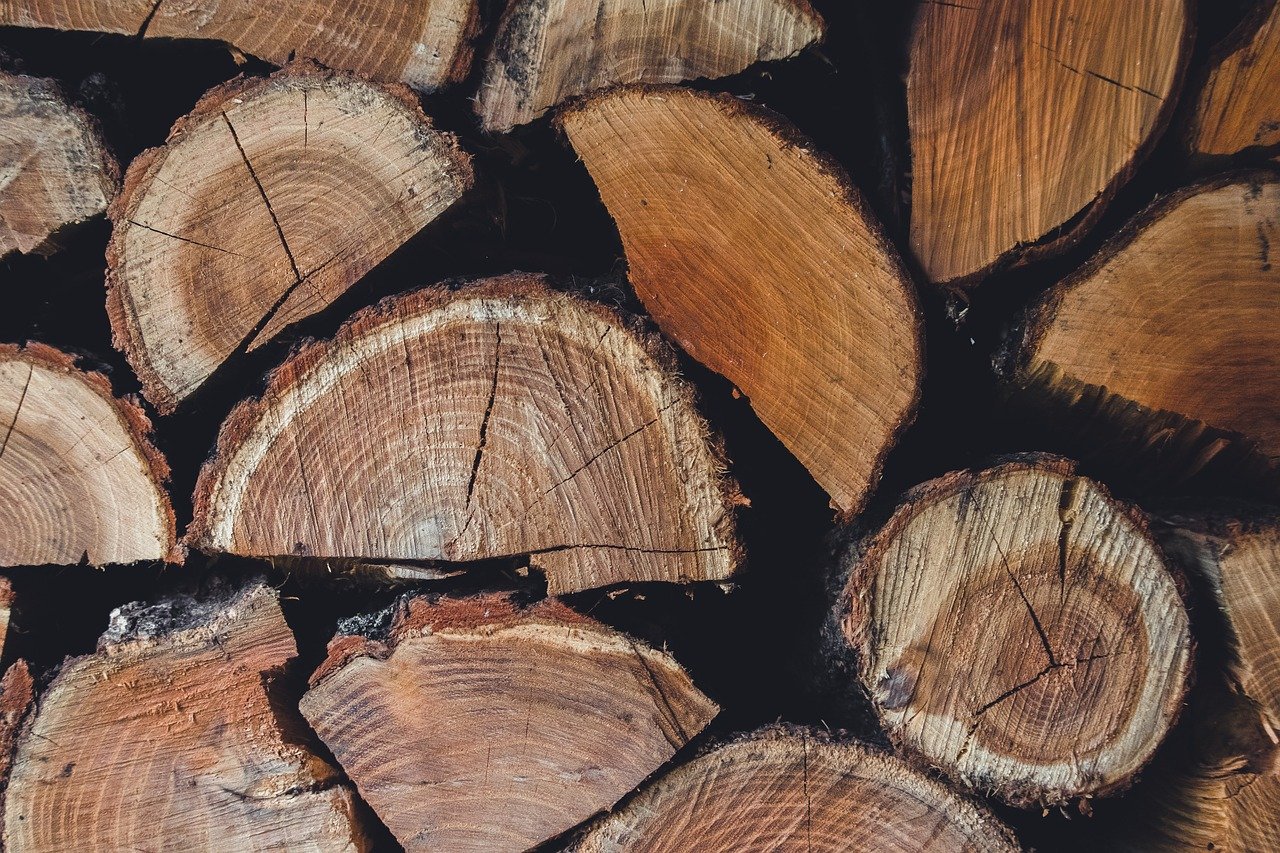When to Plant Willow Tree Cuttings: Seasonal Growing

When I first started growing willows, figuring out the right time to plant cuttings was a bit confusing. There are so many different opinions out there, but after a few seasons of trial and error, I’ve learned that timing really does matter for strong roots and healthy growth. In this article, I’ll share what I’ve picked up about when to plant willow tree cuttings, based on my own experience and some solid advice from other growers.
Key Takeaways
- Plant willow tree cuttings in late winter or early spring while the trees are still dormant.
- Late fall planting is possible but requires attention to soil moisture and protection from harsh freezes.
- Choose healthy, pencil-thick cuttings and prepare them right before planting for best results.
- Stick cuttings in the ground as soon as the soil can be worked—not when it’s frozen or waterlogged.
- Keep new plantings well-watered, pick a sunny spot, and avoid areas near septic systems or underground lines.
Optimal Seasons for Willow Cuttings

When I think about the best time to plant willow cuttings, two seasons always stand out: winter and early spring. From my experience, willow cuttings root best when planted while the trees are still dormant, which usually means working during late winter or early spring—just as the ground starts to thaw, but before the first signs of bud growth.
I often weigh these factors before deciding which window is right:
- In winter, willow branches are fully dormant, and the risk of stress or disease is lowest. The ground may be frozen, though.
- Early spring brings slightly warmer temperatures and workable soil, but cuttings need to be in the ground before they leaf out.
- Both seasons let the cuttings settle in before summer heat arrives, which is vital for strong root development.
Here’s a breakdown of common timing options:
| Planting Window |
Pros |
Cons |
| Late Winter | Dormancy preserves energy, low disease risk | Frozen soil, tricky to dig |
| Early Spring | Soil softens, easy to plant | Tight window before bud break |
If I’m feeling impatient for spring, I’ve even had good luck starting a few cuttings in pots indoors by a sunny window. This way, I can give them a head start and plant them out when the weather improves. It does mean extra steps: keep them moist, use a bit of fertilizer, and make sure to harden them off before moving outside.
In the end, early action—before the willows wake up—is what matters for vigorous growth.
Late Fall Planting

Planting willow cuttings in late fall is a choice I’ve made several times, and it does have its pros—if you plan ahead and pay attention to the details. Late fall planting lets cuttings settle in before winter truly kicks in, so they’re ready to take off when spring brings warmth.
Here are a few benefits I’ve noticed from this timing:
- Cuttings establish in cooler, moist soil, which lowers the risk of drying out.
- There’s less weed pressure since many seeds won’t germinate until spring.
- Early rooting means a jumpstart on growth straight into the new year.
But of course, late fall planting isn’t without its risks. Here’s what I keep in mind each season:
- Avoid planting too late, or frozen ground will make it impossible for roots to settle.
- Watch that soil stays just wet enough—soggy conditions, though, might rot your fresh cuttings.
- Be ready to cover the cuttings if a sudden hard freeze is in the forecast (but do so gently since buds are fragile).
- Make sure buds are pointing up when planting; it matters for successful growth during the dormant season.
- Pick spots away from areas with standing water that could ice over the cuttings for weeks.
I’ve found that giving willow cuttings a head start in late fall pays off best if I pay close attention to weather and soil—missing a cold snap or planting too deep into winter rarely ends well. My advice is to prep early, get those cuttings in while the soil is still workable, and resist the urge to rush when the forecast looks iffy.
Ideal Cutting Selection and Preparation Timing

Selecting and preparing willow cuttings takes a little care and timing, and I always try to plan this part out. The best time to take willow cuttings is during dormancy, usually in late winter to very early spring, before the buds break. This is when the willow’s energy is stored in the stems, and the cuttings are less likely to dry out or rot before rooting.
When I’m picking out cuttings, I look for these things:
- Choose healthy, disease-free rods that are about the thickness of a pencil.
- Cuttings should be taken from one-year-old wood, ideally straight and with vigorous buds.
- Each cutting should be 10–12 inches long, with at least 3-4 visible buds.
Once cut, I keep my willow cuttings moist. Usually, I keep them bundled and wrapped in a damp cloth or submerged in water until I can plant them out. Keeping them covered helps prevent them from drying out and losing viability. If I’m not planting right away, storing them in a cool, dark place buys me a bit more time, but I never wait too long—freshness matters here.
Getting the cuttings ready before the sap starts rising gives them a real jump start when spring arrives, making for healthier, stronger trees in the long run.
Timing Considerations for Softer Cuttings
When it comes to planting willow tree cuttings, timing matters a bit more if you’re working with softer, less woody cuttings. These tender stems have a shorter window for successful rooting and demand a more careful approach than fully dormant hardwood cuttings.
Here’s what I usually keep in mind when dealing with softer willow cuttings:
- Softer stems dry out quicker, so I try to prepare and plant them as soon as possible after cutting. If I can’t plant right away, I’ll submerge the cuttings in water and store them somewhere cool.
- The best time for planting soft willow cuttings is late winter into very early spring, just as temperatures begin to stay above freezing but before the buds start to expand.
- I avoid letting soft cuttings sit out in the wind or sun for too long—exposure leads to desiccation, which will reduce their root potential.
Softer cuttings benefit from slightly warmer soil than hardwood ones, so if the ground is frozen or too muddy, I’ll hold off. When soil is just becoming workable but before the willow breaks dormancy, that’s often my cue to plant. I look for well-drained earth, free from standing water, as this keeps the young stems from rotting—much like when planting seedlings during the dormant season.
I’ve found that gentle pre-soaking of soft cuttings for a day or two helps jumpstart the rooting process, but letting them soak too long makes them mushy or leads to early rot.
A little extra care at this stage pays off, since softer willow cuttings will grow fast once they take root, but if the conditions are off, they stall out or dry up in a hurry.
Planting Technique

When it’s time to plant willow cuttings, I always wait until the ground is soft enough to dig—a squishy, thawed-out patch means the soil is workable and much easier on my back and hands. Trying to force cuttings into frozen or soaked soil just leads to frustration, bent stems, and poor survival rates. Early spring is usually the sweet spot, though this will change depending on location; what matters most is that tools can get into the ground without much resistance.
Here’s how I usually tackle planting:
- I check for workable soil by poking gently with a stick or trowel—it should be moist and crumbly, not muddy or rock hard.
- I use a piece of rebar or a sturdy stake to poke planting holes a bit deeper than the length of my cuttings. Each stem needs to go in with the buds pointed upwards (always check, it’s easy to mix up!), leaving a few buds above the soil line.
- Once the cutting is in, I press the soil back around it firmly with my hands or foot for good contact, which helps the roots find their way quickly.
A key thing to keep in mind: willow cuttings don’t mind cool temperatures, but they do need reliable moisture and decent root-to-soil contact. Loose, well-drained earth makes the process so much easier, especially if I’ve set aside spots in the garden just for these fast-rooting branches. For those hoping for technical backup: year-old hardwood cuttings are considered the top pick for planting at this stage (best results when growing willows).
I’ve found that planting cuttings when the soil is just right—not sticky, not frozen—means I spend less time fixing mistakes and more time watching new willows get established.
Site Selection & Seasonal Water Management
When I pick a spot for planting willow cuttings, I take time to notice how water moves through the yard over the seasons. The right location makes a huge difference in how quickly and successfully willows take root and grow. Willows love sunny areas, but they stand out in places that stay moist during spring or winter.
Here’s what I tend to look for when choosing a site:
- Plenty of sunlight, ideally full sun for most of the day.
- No tough competition from weeds—fresh willow cuttings get overwhelmed fast.
- Good drainage: the soil should be able to hold moisture, but not stay soggy all year. While willows like wet earth, they struggle if their roots are always underwater.
- Safe distance from septic tanks or underground utilities. Willow roots are persistent and will dive deep if they sense water nearby; too close and they can cause real problems.
- Access to water, especially for the first year. Rain helps, but I always make sure I can get a hose or irrigation line to the new cuttings in case of dry spells.
Once the willows are in, watering them right is just as important as picking the spot. Here’s how I manage it by season:
| Season | Water Needs | Notes |
| Early Spring | High (encourage strong root growth) | Water 1-2 times per week |
| Summer | Medium-High (watch for heat/drought) | Deep soak if no rain in 5 days |
| Fall | Moderate (roots still active) | Ease off as leaves drop |
| Winter | Low (dormant, but don’t let dry out fully) | Only water if unusually dry |
It’s surprising how quickly willows bounce back after a good rain, but it’s those early stretches without water that set them back. Even if you get plenty of rain in your area, check for dry spots since willows can dry out in windier or more exposed places. Keeping up with water in season, alongside controlling weeds, helps them root fast and fill in thicker each year.
Interestingly, while mulberry trees also love periodic heavy watering to encourage strong roots and fruit, willows demand even more consistent attention during their first year or two. The habit you build now pays off for years to come.
Storage, Staggered Planting & Root Timing
When I set out to plant willow cuttings, I make it a point to think about the entire process—right from storage before planting, to actually spacing out my planting days, and figuring out when those roots will pop out. Willow trees aren’t too fussy, but good timing and a little patience sure make things easier.
Storing Willow Cuttings:
- Keep cuttings in a zipped plastic bag in the fridge.
- This keeps them dormant and encourages callousing, which is a sign they’re prepping for root growth.
- If you spot some whitish cracks on the stems, don’t panic—that means the willow is ready to start rooting.
Staggered Planting — Why It Helps:
- Planting all your cuttings at once is tempting, but if there’s a late cold snap, you risk losing them all. Spacing out the planting over a few weeks helps hedge your bets against weird weather.
- Staggered planting also means cuttings will root and leaf out at different times, reducing the shock if conditions swing hot or dry later in the season.
- If you’re setting up a larger number of plants, especially for a crop (like those for establishing a willow energy crop), spacing out the work over a week or so just makes the process more manageable.
What to Expect for Root Timing:
| Temperature (°F) | Average Rooting Time (Days) |
| 45-55 | 21-28 |
| 55-65 | 10-21 |
| 65-75 | 7-14 |
Rooting can be slow if it’s chilly, so don’t worry if there’s no action in the first week. Warmer soil speeds things up, but don’t plant if there’s a forecast for a hard freeze.
If you keep your willow cuttings cool, moist, and dormant until the last frost passes, and plant in waves, you’ll give every cutting the best shot—plus, if a batch fails, you’ve got more waiting in the fridge. There’s just no rushing willow; it finds its pace no matter what you want.
Best Months by Region & Cutting Type
When it comes to planting willow tree cuttings, not all regions have the same calendar. I’ve learned that selecting the right month means paying attention to both climate and cutting type—hardwood versus softwood. The timing window for optimal rooting can shift by several weeks depending on where you live.
Here’s a rundown in table form to help you make sense of it:
| Region | Hardwood Cuttings | Softwood Cuttings |
| Northern US | March–April | May–June |
| Midwest | March–April | May–June |
| Pacific NW | February–March | May |
| Southeast | January–March | April–May |
| Southwest | January–February | March–April |
| UK/Ireland | February–March | May–June |
- Hardwood cuttings should be planted as soon as the ground is workable and the hard freeze risk has mostly passed.
- Softwood cuttings need warmer soil and are best after early spring frosts are done.
- If you harvest your rods or branches for basketry, like I’ve read from growers with years of experience, try to get new batches in the soil just as sap starts rising for an easy start.
If you’re ever unsure about timing, stick your cutting in a pot indoors and watch for early roots—this has saved me some disappointment before unpredictable cold spells.
Remember, what works in one area may not work in another, so keep an eye on your local forecasts and adjust accordingly. It’s better to plant a week or two late than to see all your new sticks freeze out the first chilly night.
Finding the right time for tree trimming or cutting can depend on where you live. Some areas have better months for these services because of the weather or local rules. Want to know the best months for your region and tree type? Visit our website to learn more and see how we can help keep your trees healthy.
Frequently Asked Questions
When is the best time to plant willow tree cuttings?
The best time to plant willow tree cuttings is in late winter or early spring, when the tree is still dormant but the soil is soft enough to dig. This gives the cuttings plenty of time to grow roots before the hot summer months.
Can I plant willow cuttings in the fall?
Yes, you can plant willow cuttings in late fall, about six weeks before the first frost. This allows the cuttings to settle in before winter. Just be careful that the ground does not freeze right after planting, and water the cuttings if the soil is dry.
How do I pick the right willow cutting to plant?
Choose a healthy, straight cutting about as thick as a pencil and around 10 inches long. Make sure it does not have any disease or damage. Cuttings from the current year’s growth work best.
What should I do if my soil is too hard to plant in early spring?
If the soil is frozen or too hard, wait until it becomes soft and workable. Planting in soil that is too cold or compacted can make it hard for roots to grow.
How should I store willow cuttings before planting them?
Keep willow cuttings in a sealed plastic bag in the refrigerator. This keeps them cool and stops them from starting to grow too early. If the cuttings start to show white spots or cracks, that means they are getting ready to grow roots.
How far apart should I plant willow cuttings?
For basket weaving, plant cuttings 8 to 10 inches apart in rows about 4 feet apart. If you want decorative willows, plant them about 4 feet apart so they have space to grow bushy.



